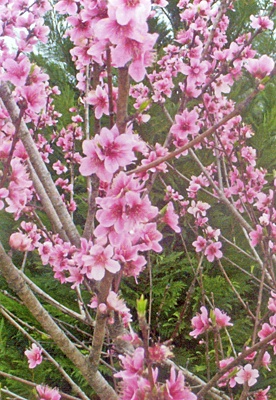All Nonfiction
- Bullying
- Books
- Academic
- Author Interviews
- Celebrity interviews
- College Articles
- College Essays
- Educator of the Year
- Heroes
- Interviews
- Memoir
- Personal Experience
- Sports
- Travel & Culture
All Opinions
- Bullying
- Current Events / Politics
- Discrimination
- Drugs / Alcohol / Smoking
- Entertainment / Celebrities
- Environment
- Love / Relationships
- Movies / Music / TV
- Pop Culture / Trends
- School / College
- Social Issues / Civics
- Spirituality / Religion
- Sports / Hobbies
All Hot Topics
- Bullying
- Community Service
- Environment
- Health
- Letters to the Editor
- Pride & Prejudice
- What Matters
- Back
Summer Guide
- Program Links
- Program Reviews
- Back
College Guide
- College Links
- College Reviews
- College Essays
- College Articles
- Back
Pink - Empowering, not Derogatory.
I don’t like the color pink. Or at least, that’s what I was taught to think growing up. As a young girl with consistent internet access, I was able to see screenshotted Tumblr posts, toxic memes, and art, all of which had one purpose in mind. To belittle other women.
Similar to many others, I fell victim to the disparaging sentiments. The rhetoric that I had to be better than other girls to be worth anything settled into my thoughts; invaded my subconscious until I was locked in a mindset that started in Elementary School, continued through Middle School, and still occasionally affects me to this day. This mindset: which society finds necessary to teach impressionable young women, made me reject makeup, throw tantrums about frilly dresses, make snide remarks about other girls, and made me generally think that through my rejection of all things feminine, I was better than those who made the opposite choice. These thoughts, which made up a large amount of my life, were all centered around pink. Or rather the rejection thereof.
For a long time pink has been viewed as a symbol of the worst aspects of femininity. People look at pink and see a color that represents weak-willed women, and a submission to the misogynistic injustices of the world. They see the color as a thing that makes the statement “Well-behaved women seldom make history” into a self-fulfilling prophecy rather than a simple statement. These applied characteristics may have started in multitudes of places. Pink represents girls in gender reveal parties and certain flags. Baby girl clothes are pink, and often accompanied with misogynistic text such as “I’m a Ladies Man.'' From the time of birth, pink is the color of, often subpar, but more expensive products for women. It goes so far that there is even a term, “The Pink Tax," a reference to the inferior items women are meant to buy. Pink is also representative of toxic women, in formative pieces of media. For instance Dolores Umbridge in Harry Potter or the plastics in Mean Girls. But despite these negative associations, young girls are still put in pink, and expected to conform to society’s standards of what a proper young woman should be. As time goes on in a young girl's life, all of the pieces of the puzzle seem to come together, and the solution is obvious. In order to be strong and closer in status to men, it is imperative that we reject all things traditionally feminine, specifically the color pink.
Another negative meaning attributed to this color is the term “Seeing life through rose-colored glasses.” This phrase implies that one is seeing the world through a lens of naivety and undeserved optimism. This phrase is often used to talk about people who are too trusting in relationships. However, one song by Kate Nash called Life In Pink has recently given this phrase new meaning in my own life. The lyrics in the chorus state “I keep heart-shaped glasses close to me for when it rains.” A theme present in the rest of the song is expanded here, saying that seeing life through a pink tint lets you see the beauty in trials. When we look at the world, through a lens of simple beauty and the soft nature that is found in women. This rose-colored way of seeing the world can make us happier, and create simple solutions to complex problems.
Despite the negative aspects of the color pink, it remains indisputably tied to femininity. And femininity is not; and should not be made out to be an inherently negative thing. We can love being feminine without being forced into conformation. We can retain our identity despite liking basic or traditional things; because someone strong, someone truly empowered, is someone who can choose for themselves. We can choose whether to wear dresses or wear pants. We can choose how short or long we want to cut our hair. And we can choose whether or not to love the color pink. Femininity is not inherently evil, and this color does not have to divide us into strong and weak. Pink is the ability to define ourselves.
There are stigmas. There are stereotypes. There is negativity. But to me, pink means seeing life in a better light. Pink is my ability to be happy and my way of connecting with my own femininity. For everything it is and everything it is not, pink is, and always will be my favorite color.

Similar Articles
JOIN THE DISCUSSION
This article has 0 comments.

My name is Sam! I wrote this piece because of my struggles with being feminine while still retaining my own identity. Thank you for reading!